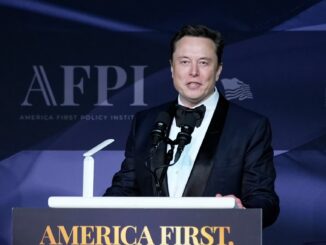
The diplomatic relationship between the United States and India has experienced significant shifts over recent years, influenced by leadership changes and evolving geopolitical dynamics. As Prime Minister Narendra Modi embarks on a two-day visit to Washington, D.C., from February 12 to 13, 2025, to meet President Donald Trump, several critical issues are poised to shape the discourse between the two nations.
During President Trump’s first term, he and Prime Minister Modi developed a notably close rapport. This camaraderie was exemplified by events such as the “Howdy Modi” rally in Houston in 2019, where Modi endorsed Trump’s leadership before a crowd of over 50,000 Indian Americans when he gave the slogan “Abki Baar, Trump Sarkaar”. However, the subsequent Biden administration saw a noticeable decline in high-profile interactions between the two leaders, leading to speculations about a cooling of personal ties.
Trade has been a cornerstone of U.S.-India relations, but it has also been a source of contention. President Trump has frequently criticized India’s trade practices, labeling the country as the “tariff king” due to its high average tariffs of 14%, which surpass those of China and Canada. In response, India has initiated measures to reduce tariffs on various U.S. products, including smartphone components and electric vehicle battery materials, aiming to improve trade relations and mitigate potential U.S. retaliatory tariffs.
Despite these efforts, the trade imbalance remains significant. In the fiscal year 2023/24, bilateral trade reached $118 billion, with India maintaining a trade surplus of $32 billion. To address U.S. concerns, India has increased imports of American oil and gas and is considering more energy imports amidst recent tariff changes favoring American products.
Defense collaboration has been a bright spot in U.S.-India relations. The U.S. has become a significant arms supplier to India, with recent deals including the sale of U.S.-made MQ-9B SeaGuardian drones and a partnership between General Electric and Hindustan Aeronautics to produce jet engines. These agreements underscore the deepening military ties between the two nations.
Both countries share a strategic interest in countering China’s influence in the Indo-Pacific region. The U.S. has advocated for a more assertive role for India within the Quad—a strategic grouping that includes the U.S., India, Japan, and Australia. However, there is speculation that President Trump may adopt a less confrontational stance toward China in his second term, potentially diminishing India’s strategic importance in U.S. regional policy.
Immigration remains a complex and sensitive topic in U.S.-India relations. The U.S. has expressed concerns over the increasing number of undocumented Indian immigrants, with over 25,000 arrests on the Mexican border recently. In response, the Modi government has announced plans to repatriate approximately 18,000 Indian nationals living illegally in the U.S. aiming to demonstrate cooperation with U.S. authorities and protect legal immigration pathways vital for Indian skilled workers.
The recent deportation of 104 Indian nationals, who were reportedly handcuffed and leg-chained during their return on a U.S. military plane, has sparked controversy and criticism within India. Opposition lawmakers have condemned the treatment of the deportees, urging the Modi government to address the issue with U.S. counterparts.
Given the multifaceted nature of U.S.-India relations, the upcoming meeting between President Trump and Prime Minister Modi is expected to cover a broad spectrum of topics.
Trade and Tariffs: Discussions will likely focus on further reducing trade imbalances, with India potentially offering additional concessions on tariffs and increasing imports of American goods.
Defense Cooperation: Both leaders may explore opportunities to expand defense ties, including potential new arms deals and joint military exercises.
Immigration: Addressing the complexities of illegal immigration and ensuring the protection of legal immigration channels for skilled Indian workers will be crucial.
Geopolitical Issues: The leaders are expected to discuss regional security concerns, including the situations in Gaza and Ukraine, as well as strategies to manage China’s influence in the Indo-Pacific.
As Prime Minister Modi and President Trump prepare for their first meeting in Trump’s second term, the dynamics of U.S.-India relations stand at a critical juncture. While past warmth between the two leaders may have cooled, the strategic imperatives of both nations necessitate a pragmatic approach to collaboration. The outcomes of this meeting will be pivotal in shaping the future trajectory of bilateral ties, with significant implications for trade, defense, and regional security.





Be the first to comment